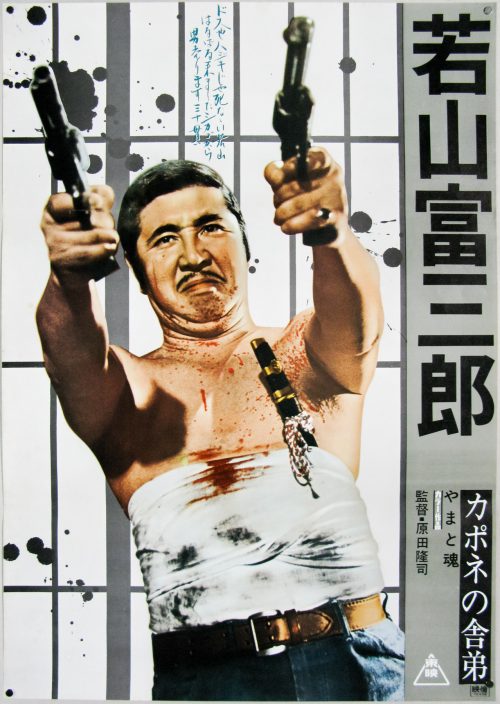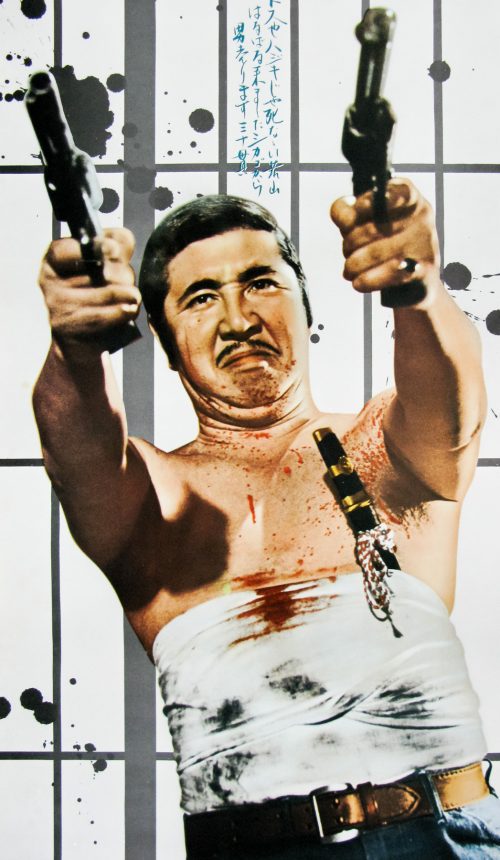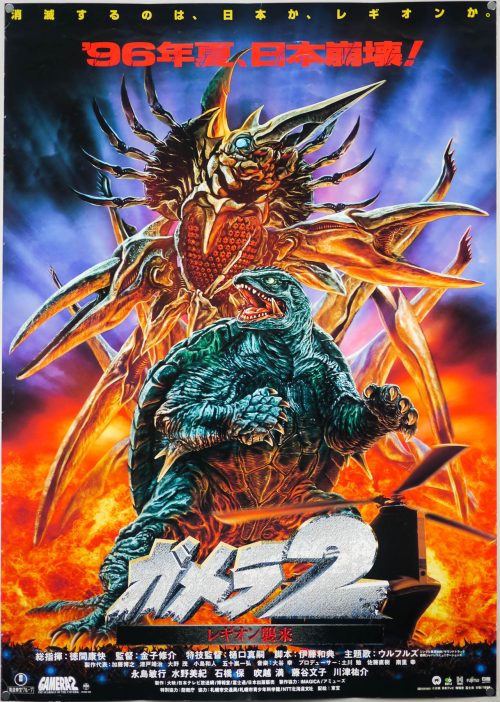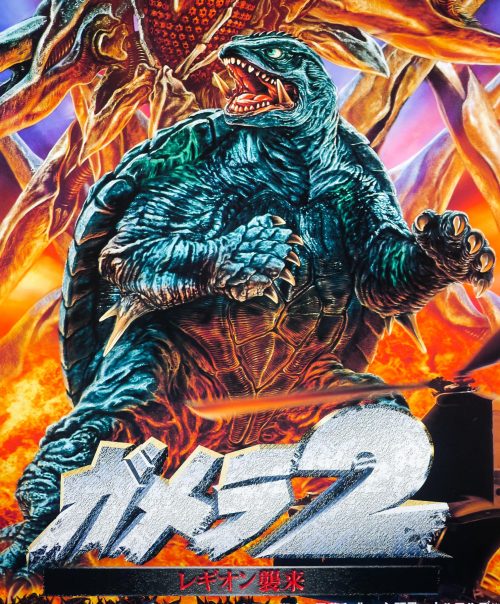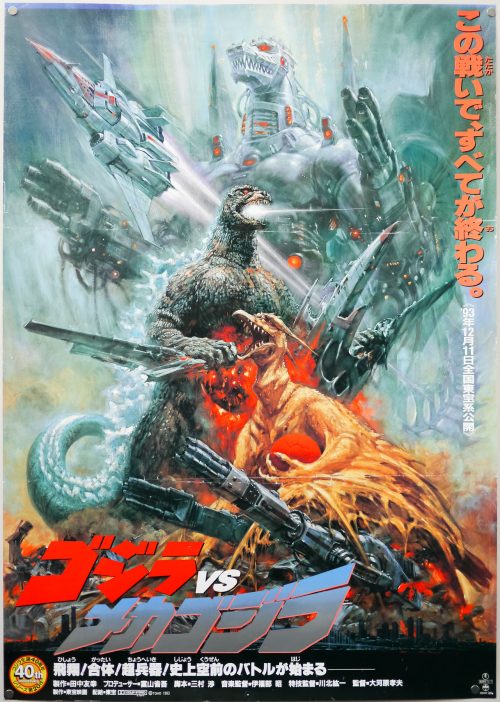
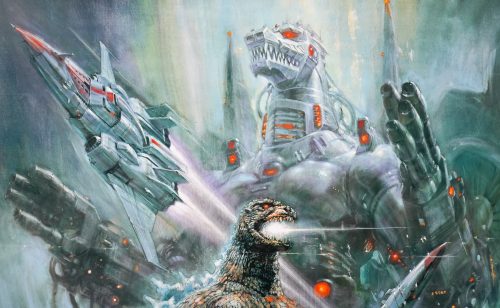
- Title
- Godzilla vs. Mechagodzilla
- AKA
- Godzilla vs. Mechagodzilla II (alternative title) | Gojira VS Mekagojira (Japan - original title)
- Year of Film
- 1993
- Director
- Takao Okawara
- Starring
- Masahiro Takashima, Ryoko Sano, Megumi Odaka, Yûsuke Kawazu, Kenji Sahara, Akira Nakao, Kôichi Ueda, Leo Meneghetti, Daijiro Harada, Tadao Takashima
- Origin of Film
- Japan
- Genre(s) of Film
- Masahiro Takashima, Ryoko Sano, Megumi Odaka, Yûsuke Kawazu, Kenji Sahara, Akira Nakao, Kôichi Ueda, Leo Meneghetti, Daijiro Harada, Tadao Takashima,
- Type of Poster
- B1
- Style of Poster
- Artwork
- Origin of Poster
- Japan
- Year of Poster
- 1993
- Designer
- Unknown
- Artist
- Noriyoshi Ohrai
- Size (inches)
- 28 12/16" x 40.5"
- SS or DS
- SS
- Tagline
- --
A colourful montage on this Japanese B2 poster for Godzilla vs Mechagodzilla, which was the 2oth film in the series featuring the King of the Kaiju (giant monsters) and was marketed as the 40th anniversary of the series. The film was also the fifth release in the second generation of Godzilla films, which were part of the Heisei era of Japanese monster movies (daikaiju eiga). The monster movie eras are named after the Japanese emperor at the time, so the first generation of Godzilla films were part of the Shōwa era. Despite sharing the same title with a 1974 film, this is neither a remake or a re-imagining of the earlier version.
The story sees the United Nations Godzilla Countermeasures Center (UNGCC) created in order to stop the legendary monster. Two machines are manufactured from the salvaged parts of Mecha-King Ghidorah, a mechanised abomination last seen in 1991s Godzilla vs King Ghidorah; one is a flying gunship called Garuda and the other is the titular Godzilla-like robotic beast. When a mysterious egg is discovered on an island in the Bering sea, both Godzilla and Rodan – the irradiated pteranodon seen in several previous films in the series – appear and battle over it, allowing a team to escape to a research centre in Kyoto. When the egg hatches it is revealed to be Baby Godzilla (AKA Godzilla Junior) and once again the legendary Kaiju is summoned to Japan by its psychic powers. The UNGCC decide to mobilise their new defence weapons and both Rodan and Godzilla are pitched against the metallic foes.
The artwork on the poster is by Noriyoshi Ohrai who is something of an enigma, even in his native Japan. I’ve been unable to find much about him beyond a few pages like this one on the Star Wars Wookiepedia. He’s responsible for a number of Star Wars posters, including this lovely 1982 B2 to celebrate the release of the Japanese dubbed version of the original film and the brilliant design for The Empire Strikes Back.
Ohrai painted a poster for each of the Heisei era of Godzilla films, which were always accompanied by a photographic-style poster. I will be adding more of the Ohrai Godzilla posters over the coming weeks.
The other Ohrai posters I’ve added to the site so far can be seen by clicking here.
